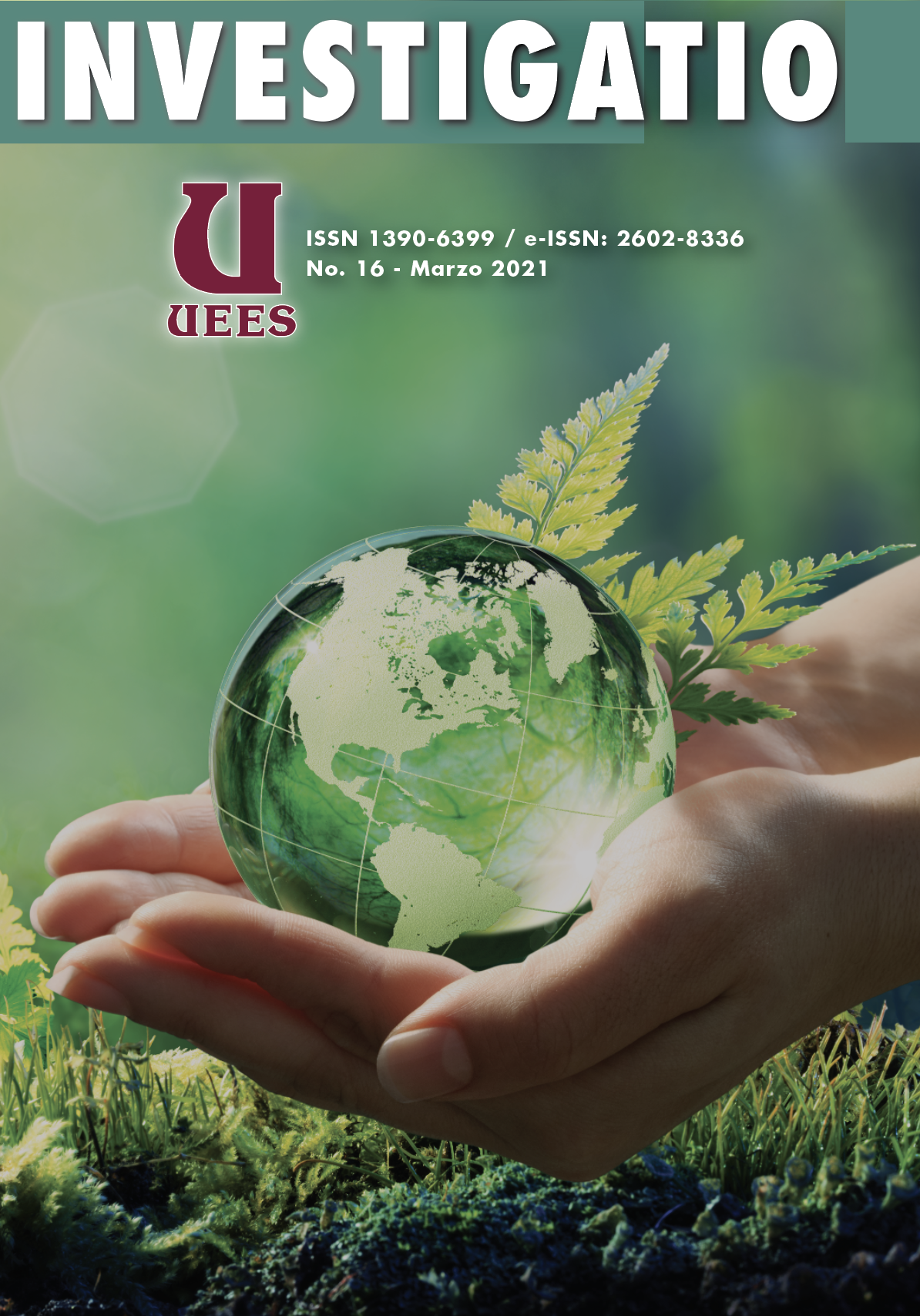Review About Comamonas kerstersii as Infectious Agent
Main Article Content
Abstract
The description of Comamonas genus as an infection agent is unusual; there are very few reports in the world, and they are scarce in Ecuador. The following is a bibliographical microorganism review, carried out by Pubmed, Scielo and Google Scholar, in Spanish and in English languages over the past 10 years; the aim of this study was to establish a brief state of the art review about Comamonas as a pathogen. The present review has allowed identification of scarce available evidence; such evidence is based on observational studies, on possible lines of research for Ecuador (both in medicine and microbiology), and on establishing a frame of reference for a poorly described gender; to some extent this gender is "unknown" in the health field.
Downloads
Article Details

This work is licensed under a Creative Commons Attribution-NonCommercial 4.0 International License.
INVESTIGATIO es de acceso abierto y el contenido está disponible de manera gratuita a través de su sitio web: http://revistas.uees.edu.ec/index.php/IRR/.
Para reforzar nuestra política de acceso abierto, la revista INVESTIGATIO se publica bajo una licencia Creative Commons Reconocimiento-No Comercial 4.0 Internacional (CC-BY-NC 4.0), la cual permite compartir (copiar y redistribuir el material en cualquier medio o formato) y adaptar (remezclar, transformar y crear a partir del material), bajo la condición de que se den los créditos correspondientes y no se haga uso comercial de los materiales.
References
Almuzara, M., Barberis, C., Veiga, F., Bakai, R., Cittadini, R., Vera Ocampo, C., Alonso Serena, M., Cohen, E., Ramirez, M. S.,
Famiglietti, A., Stecher, D., del Castillo, M., & Vay, C. (2017). Unusual presentations of Comamonas kerstersii infection. New Microbes and New Infections, 19, 91-95. https://doi.org/10.1016/j.nmni.2017.07.003
Almuzara, M., Cittadini, R., Estraviz, M. L., Ellis, A., & Vay, C. (2018). First report of Comamonas kerstersii causing urinary tract infection. New Microbes and New Infections, 24, 4-7. https://doi.org/10.1016/j.nmni.2018.03.003
Almuzara, M. N., Cittadini, R., Vera Ocampo, C., Bakai, R., Traglia, G., Ramirez, M. S., del Castillo, M., & Vay, C. A. (2013). Intra-Abdominal Infections Due to Comamonas kerstersii. Journal of Clinical Microbiology, 51(6), 1998-2000. https://doi.org/10.1128/JCM.00659-13
Farfán-Cano, G., Parra-Vera, H., Ávila-Choez, A., Silva-Rojas, G., & Farfán-Cano, S. (2020). Primera identificación en Ecuador de Comamonas kerstersii como agente infeccioso. Revista Chilena de Infectología, 37(2), 179-181. https://doi.org/10.4067/s0716-10182020000200179
Farooq, S., Farooq, R., & Nahvi, N. (2017). Comamonas testosteroni: Is It Still a Rare Human Pathogen. Case Reports in Gastroenterology, 11(1), 42-47. https://doi.org/10.1159/000452197
Jiang, X., Liu, W., & Zheng, B. (2018). Complete genome sequencing of Comamonas kerstersii 8943, a causative agent for peritonitis. Scientific Data, 5(1), 180222. https://doi.org/10.1038/sdata.2018.222
Liu, X., Qiao, X., Huang, T., Li, L., & Jiang, S. (2020). Comamonas kerstersii bacteremia. Médecine et Maladies Infectieuses, 50(3), 288-290. https://doi.org/10.1016/j.medmal.2019.12.005
Palacio, R., Cabezas, L., Cornejo, C., & Seija, V. (2020). Bacteriemia por Comamonas kerstersii en un joven con apendicitis aguda. Revista Chilena de Infectología, 37(2), 182-185. https://doi.org/10.4067/s0716-10182020000200182
Palacio, R., Cornejo, C., & Seija, V. (2020). Comamonas kerstersii. Revista Chilena de Infectología, 37(2), 147-148. https://doi.org/10.4067/s0716-10182020000200147
Patiño-Castillo, B. (2018). Determinación de la biodiversidad microbiana de los bosques nativos Llucud y Palictahua de la provincia de Chimborazo 2018 [Escuela Superior Politécnica de Chimborazo]. http://dspace.espoch.edu.ec/handle/123456789/8766
Sotres, A., Cerrillo, M., Viñas, M., & Bonmatí, A. (2016). Nitrogen removal in a two-chambered microbial fuel cell: Establishment of a nitrifying–denitrifying microbial community on an intermittent aerated cathode. Chemical Engineering Journal, 284, 905-916. https://doi.org/10.1016/j.cej.2015.08.100
Tiwari, S., & Nanda, M. (2019). Bacteremia caused by Comamonas testosteroni an unusual pathogen. Journal of Laboratory Physicians, 11(01), 087-090. https://doi.org/10.4103/JLP.JLP_116_18
Wu, Y., Zaiden, N., & Cao, B. (2018). The Core- and Pan-Genomic Analyses of the Genus Comamonas: From Environmental Adaptation to Potential Virulence. Frontiers in Microbiology, 9, 3096. https://doi.org/10.3389/fmicb.2018.03096
Zhou, Y., Ma, H., Dong, Z., & Shen, M. (2018). Comamonas kerstersii bacteremia in a patient with acute perforated appendicitis: A rare case report. Medicine, 97(13), e9296. https://doi.org/10.1097/MD.0000000000009296

